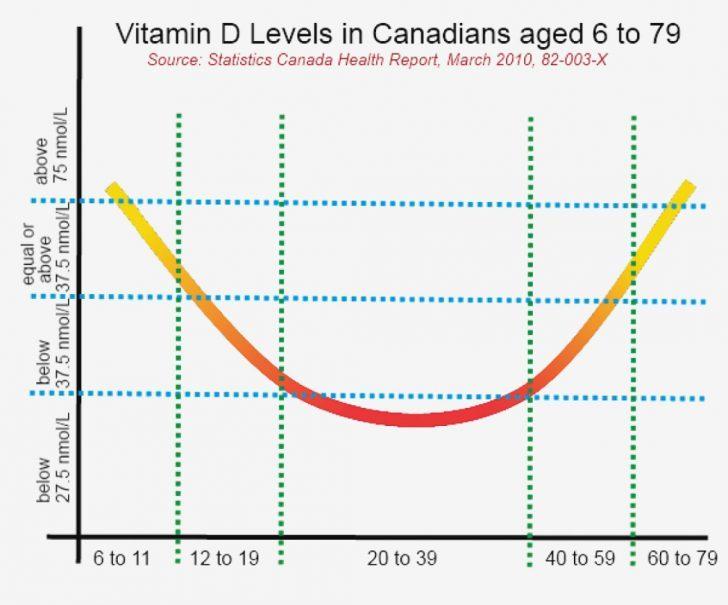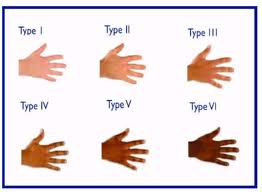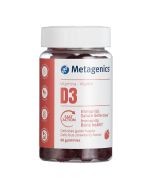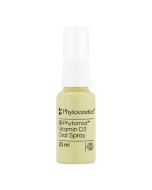
What’s The Difference Between Vitamin D2 And Vitamin D3?
By Neesha Desai, Pharmacist (GPhC 2071387)
Vitamin D is crucial to our body’s health and happiness. It has been used for a huge number of purposes for generations, particularly in countries like the UK where we spend between three and six months rising in darkness, ferrying ourselves to offices only to find we’re leaving in darkness. It is for this reason that Vitamin D can be a vital supplement to keep ourselves happy and healthy.
Before we get into any further details let’s also just cover a question that comes up a lot, namely the difference between Vitamin D2 and Vitamin D3.
Comparing Vitamin D2 and D3
Vitamin D2

Vitamin D2 is produced by plants, usually when they are exposed to UV light. Common household foods that contain Vitamin D2 include wild mushrooms. Unfortunately in order for the human body to make use of Vitamin D2, it must be converted into cholecalciferol. This process is not at all efficient in the body, meaning that despite foods like mushrooms containing Vitamin D2, it's extremely hard to naturally obtain the Vitamin D your body needs from food alone. In this article, therefore, we concentrate on Vitamin D3.
Vitamin D3

Vitamin D3 is produced naturally in people when their skin is exposed to UV light. The body undergoes a process which converts cholesterol into Vitamin D3. The D3 that our bodies produce is known as cholecalciferol. The Liver and kidneys then combine to convert cholecalciferol into calcitriol which is the active form of Vitamin D. When your Vitamin D levels are tested at the hospital, it’s usually the calcitriol level they’re measuring.
Now we understand this we can consider a few other questions:
How Do I Know If I’m Getting Enough Vitamin D?
It depends on a few factors, namely:
The Colour Of Your Skin

Typically, the darker your skin tone, the harder it is for your body to naturally absorbs Vitamin D naturally from sunlight. Typically darker skin has more melanin, but melanin counteracts the skin’s ability to make Vitamin D3. This is why traditionally people with darker skin are at a higher risk of suffering from Vitamin D deficiencies.
Your Normal Exposure To Sunlight
Unsurprisingly, if you spend a lot of time indoors then it’s likely your body is not getting enough Vitamin D naturally.
A study in Canada determined that Vitamin D levels are lowest in those aged 20 to 39, whilst kids and retirees tend to have higher levels. Essentially, if you’re spending all day at work there’s a good chance you’re going to be Vitamin D deficient.

What is the Recommended Daily Dose Of Vitamin D3?
In the UK, 400iu (or 10ug) or Vitamin D3 is the Government’s recommended daily dose. However it’s worth noting that these NRV/RDA levels are based on World WarTwo rations!
During World War Two, when it was deemed that rations would be necessary because of severely limited resources, the government was forced to agree upon daily recommended doses for the essential nutrients to ensure that they weren’t actively starving the population. They therefore most likely no longer reflect what is truly necessary given how much the world has changed in the past eighty years.
We live in an age now where the majority of people work longer hours and we also spend more time indoors (both during our work time and our free time). It’s also worth noting that if you’re outside, perhaps on a beach or on a golf course, sun tan lotion, whilst essential to help fight skin cancer, also has the negative effect of inhibiting your bodies ability to absorb D3.
Generally At Landys We Suggest The Following Vitamin D Daily Dose
- For light-skinned people, 1000iu of Vitamin D3 daily during the winter and then only 400-600iu in the summer time.
- For dark-skinned people, 2000-2500iu of Vitamin D3 daily during the winter and then 1000iu in the summer time

Hopefully you’ll also recognise that you might need to adjust this slightly depending on your own circumstances and lifestyle. If you know you spend very little time outdoors, or perhaps you hibernate through the winter, then you may want to consider adjusting your D3 intake slightly upwards depending on when you need it.
How Do I Know If I Need To Take Vitamin D3?
The frustrating truth is that the answer to this question tends to be vague. Vitamin D deficiency usually results in the following symptoms:
Symptoms Of Vitamin D Deficiency:
- Tiredness/Fatigue
- Poor Immune system (getting ill often)
- Aches/Pains (particularly bone based pain)
- Feeling depressed
- Poor bone density

The issue with this is that any of these issues can also be related to other mineral deficiencies. The only way to be absolutely certain is to have a blood test. We always recommend asking to see the results of the blood test; a doctor will tell you that your Vitamin D levels are fine, even if you at the absolute bottom of what they consider the minimal acceptable level, but as we’ve already noted above, the minimal acceptable levels are based on what the UK government in the 1940s felt people had to have in order not to die!
Factors That Can Make You More Prone To Vitamin D Deficiency
That said, it is more likely that you could be Vitamin D deficient if:
- You have darker skin
- You spend a lot of time indoors
- The time you spend outdoors you are well covered or wear a lot of sun tan lotion
- If you live close to either pole, and thus don’t get short days in the winter or very little sunshine.

How Long Will Vitamin D Take To Work?
Generally when doctors determine a Vitamin D deficiency, they will recommend a very high dose (between 10,000 and 50,000iu per day of Vitamin D3) for around six weeks in order to “correct” the deficiency. Following this they will then suggest you move down to between 1000iu and 2000iu per day until you can have another blood test.
How can I get more Vitamin D into my system?
There are both natural and supplemental ways to get more Vitamin D3:
Natural Vitamin D Supplements
Foods Containing Vitamin D3
There’s a variety of natural foods which contain Vitamin D3 such as:
- Mushrooms
- Fatty Fish
- Beef Liver
- Egg Yolks
- Cereals fortified with Vitamin D3
- Milk fortified with Vitamin D3
The problem is that the levels of D3 in foods tend to be too low to get enough. It would be very difficult to get a daily dose of Vitamin D3 purely from your diet.
Vitamin D3 From Sunlight
Sun exposure is also a way to absorb more Vitamin D3 but this increases the risk of melanoma so needs to be managed carefully. The idea should not be to worship the sun for hours upon hours but instead to try and spend short periods of time in the sun (i.e. 15 minutes of less) followed by a break in the sun or shade. Again, this method could be time consuming which is why so many people choose instead to take supplements.

Your ability to absorb D3 through the sun is dependent on your skin colour.
Amount of time a 20-30 year old should spend in the sun in the summer time at noon (i.e. when the sun is at its highest point) in the UK to get sufficient Vitamin D3:
- Type 1 should get 10 minutes per day.
- Type 2 should get 15 minutes per day.
- Type 3 should get 20 minutes per day.
- Type 4 should get 25 minutes per day.
- Type 5 should get 30 minutes per day.
- Type 6 should get 35 minutes per day.
It's worth noting that these times would rise if you're elderly, overweight or if it's cloudy and it assumes you're wearing shorts and a t-shirt.
Supplement Types
Vitamin D3 comes in a variety of supplemental forms; tablets, chewable tablets, capsules and liquids being the most common.
Vitamin D3 is fat soluble, meaning that it can be hard for the body to get rid of Vitamin D3 once in the system. The benefit of this is that for lazy users, they can take one high dose D3 a week and get the equivalent benefit of taking one lower dose per day. The risk is that it is possible to take too much Vitamin D3 in the long term which can be harmful.
Some of our favourites include:
- Lamberts Vitamin Tablets
- Viridian Liquid Vitamin D3
- Viridian Vitamin D3 (Vegan) Capsules
- Solgar Vitamin D3 Chewable Capsules
Can Too Much Vitamin D3 Be Harmful?
Yes, like with mostly aything, too much can be harmful. There are risks if you take too much Vitamin D3 over time. Because it is fat soluble and the body struggles to rid itself of Vitamin D3, there is a risk that you can overdose on Vitamin D3.
Typically too much Vitamin D3 would cause a build up of calcium in the body. This can be harmful for your heart primarily, but also has associated risks for your bones.
Excessive D3 levels can cause nausea and vomiting in some cases but counter intuitively can also lead to extreme fatigue.
It is hard to diagnose Vitamin D3 overdose without a test. So if you think that you might have overdosed it's essential to get a blood test. The recovery period depends on the extent of the overdose. Doctors sometimes will fix it just by telling you to take no more D3 but in extreme cases they'd also provide fluids to try and flush your system.
If you’d like to know more, please get in touch with us or, if you are concerned about vitamin D3 deficiency or overdose, contact your doctor to arrange a blood test.
Disclaimer
The products offered are not intended to diagnose, treat, cure, or prevent any illness or disease, or to replace the advice of a medical professional. Results are not guaranteed and may vary from individual to individual.






